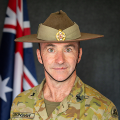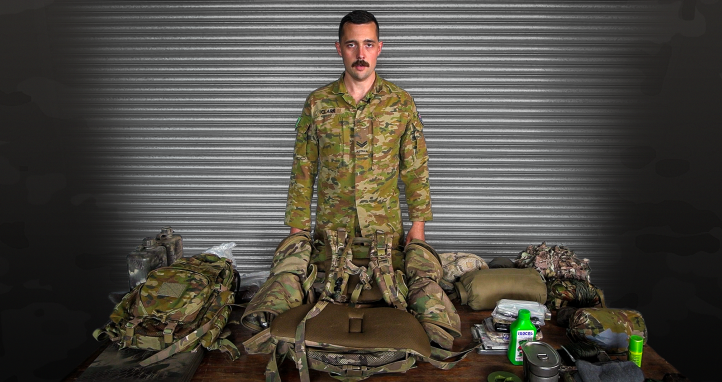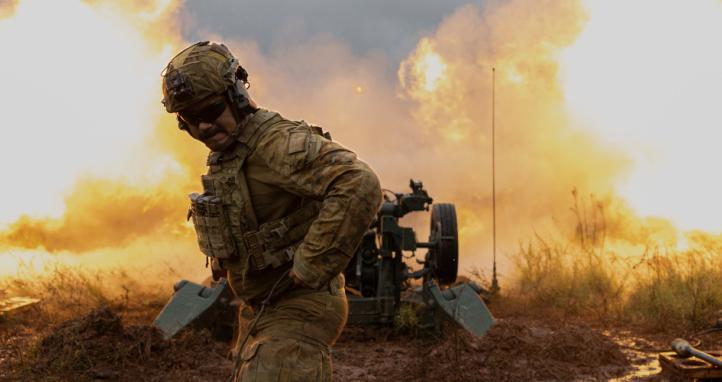Sport stretches our physical capacity but also teaches life lessons that extend beyond the competitive sporting field. Against the trend of declining youth sport participation, I believe the more team sport that recruits do before they join, the better. I am a keen advocate for ADF Sport and Army members doing civilian sport. Here are six lessons I am learning doing the sport that I love most. The lessons help me at a personal level and inform my character training as a chaplain.
1. Triathlons are my hobby but also my classroom for resilience.
The Commanders’ Guide to Resilience defines resilience as “capacity of individuals, teams and organisations to adapt, recover and thrive in situations of risk, challenge, danger, complexity and adversity”. The assumption is that stressful challenges will come our way, but resilience is the elastic band that lets us recover to normal wellbeing and performance. The Cove has discussion questions around resilience and how it best grows, and for me the answer is triathlons.
No military plan survives with certainty beyond first contact, and no race plan is guaranteed after the start. I have had waves dunk me and panic take my breath, swimmers kicking me and goggles breaking, flat tyres and broken gear, stomach cramps and blood blisters, freezing rain and blistering heat. Determination to bounce back and do the best I can with what is in front of me has helped me come back from behind in races. It also gives me practice in facing life difficulties and dealing with them calmly.
I love triathlons as a hobby, but they are also my resilience classroom.
2. I enter as an individual, but triathlons are really a team sport.
Triathlons are mostly individual entries, but I have learned triathlon performance at its best is a team sport.
Firstly, I train best with a team. I rarely swim the same pace or distance as when I get to swim squad. I reached my peak cycling power when training regularly on the Velodrome with mates. I struggle to maintain strong tempo on solo runs and find it easier with friends running alongside and out in front. Strava data worldwide shows we exercise more often and go longer and faster with others.
Secondly, I race with ADF Triathlon Club and Hawthorn Triathlon Club. Together we enjoy the challenge of pushing our bodies to the limits of what they can do. At my personal best triathlon in Busselton in 2018 my mate Jarrod beat me by 30 seconds (over 9.5 hours!), but I was elated and so thankful. He beat me, but I would not have done as well against my age group without his pacing.
Thirdly, although competing with and against others, those whom I swim, ride, or run alongside help carry me along. When prone to panic in a mass swim start, I use positive self-talk to tell myself I am swimming with friends who pull me in their draft. Bikes that pass mine are good motivation to keep pushing. The run is often the hardest leg not to slow down, but the energy of a slap or encouragement of another runner lifts my energy. It is the team that helps me stay resilient and keep the bounce in my step.
I used to think I could go it alone in life. I have tried going it alone in sport. But I have learned in life and sport I need my mates. Any worthwhile performance is ultimately a team sport.
3. There is always more to learn about my multiple strengths and weaknesses.
Six months after joining my triathlon club I naively asked the coach what he thought I needed to improve – my swim, cycle, or run? “All of them”, he replied. Later I asked what one thing can I do to improve each discipline? He said instead of one thing, make a list of ten to work on – strengths and weaknesses.
I cannot do a hundred things at once to improve. But I need to maximise multiple strengths and address multiple weaknesses. This involves measuring performance and growth, similar to what Emily Chapman wrote for the Cove on Measuring Resilience.
In my triathlon resilience classroom, the bike is my strongest leg and my comfort zone. Yet I don’t want to be comfortable there – I want to push the boundaries of my limits and excel. The swim is my weakest leg and challenge zone. If I am going to panic or lose a race, I’ll do it in the swim. A hero of mine, triathlon coach Matt Dixon, said philosophically about Swim Success:
“If swimming is someone’s weakness, there is something highly valuable in the bigger picture of really working on a weakness. There are very few things in life when people take on a challenge which is uncomfortable which is exposing a weakness and convert that into a strength. Just the act alone can be incredibly rewarding from an emotional standpoint and really an opportunity and I think that the lessons that come out of that, which is obviously quite humbling, extend to you as a high performer across life.”
Facing my swim weaknesses has taught me so much about facing the fear and doing it anyway.
4. Growth comes from challenge and recovery.
To go faster in a race than I have gone before, I need to go stronger and faster in training. It is futile telling myself I will race at a certain pace if I have not challenged myself to consistently achieve strong and regular intervals at that speed in training. So, when doing a fast interval and I feel like slowing, I imagine myself speeding up when it matters in a race. As I learned from “Mental Hack for Marginal Mental Gains with Dr Jim Taylor”, I say to myself with pride “I’m stretching my limits.” The challenge of pushing the pace or distance envelope gets me fit for doing that in races.
Yet it is also no use trying to hit those speeds day after day. I need rest and recovery. In fact, my muscles and aerobic capacity build not on the days I go hard, but when I go easy and recover the days after. I’ve learned I cannot afford habits of poor nutrition and sleep if I want to stay healthy and thrive in sport – a fact underlined in the Commanders’ Guide to Resilience. Todd Snowden in Resilience helpfully illustrates the need for downtime away from stressors. Jason Moriarty in Leadership in Focus underlines the potential of physical and adventure training in building resilience, but also notes the need for post-deployment decompression. Resilience builds as we practice it in responding to challenges. Yet we need to avoid overexposure to stress just as I need to avoid tendency to overtrain as a triathlete.
5. Success comes from focus on process not outcome.
It is tempting to be preoccupied about a race result during a race or even in training. Yet the best thing I can do in training is focus on the process of doing that session with the best of my skill and effort. The best thing I can do in a race is focus on the most efficient and smooth form I can achieve there and then. It becomes about performing optimally in that next two minutes, not the next two hours or even further into the future. This is an exercise of mindfulness. I can control the present process. The future outcome is out of my hands.
The Balance is Better youth sport movement has helped me appreciate this. Neuroscience trainer Kathryn Berkett explains that resiliency in children through sport comes from teamwork, relationship skills, knowing how to succeed and win but also keep at it when losing, and how to hold stress and emotions and then let it go. Coach Reed Maltbie comments on Developing Warriors Not Winners that it can be too easy to care only about trophies; to be so fixed on outcomes that we neglect the virtue of true development:
“We have a chance to teach our children and our athletes the awesome joy of being a warrior. Of seeking challenge, battling for personal excellence, of striving to be a better person each day, and living and playing with a purpose and embedded in values. They have the opportunity to experience deep satisfaction in mastering the game, enjoying the journey, and being part of something bigger than themselves. We make this choice to create warriors not winners and we may not fill our mantle with trophies, but we will fill the world with happy, resilient, purposeful people who will make an impact beyond the game.”
This addresses youth in sport but the wisdom of process-focus applies equally to me as an age-group triathlete and to broader Army resilience.
6. Pursue what gives you life, and hours feel like minutes.
Eric Liddell is quoted as saying: “When I run, I feel God’s pleasure.” Tapping into things we can be good at and enjoy will give us life and energy. That is when we may get into a state of optimal performance – of “flow” – when time flies and hours feel like minutes. That is helpful for multi-hour endurance events!
Ten years ago, I decided I did not want to be a workaholic for the rest of my life. I needed a sport. So, I joined my friend’s indoor cricket club. But I was hopeless at it and did not enjoy it. Yet I had a hunch I might enjoy triathlons and marathons. So, I joined a triathlon club; pursuing that which gave me life and what I grew to love. At times in training or event hours do feel like minutes. At other times, hours feel like long days in the saddle and on my feet – but that’s the resilience classroom in itself.




